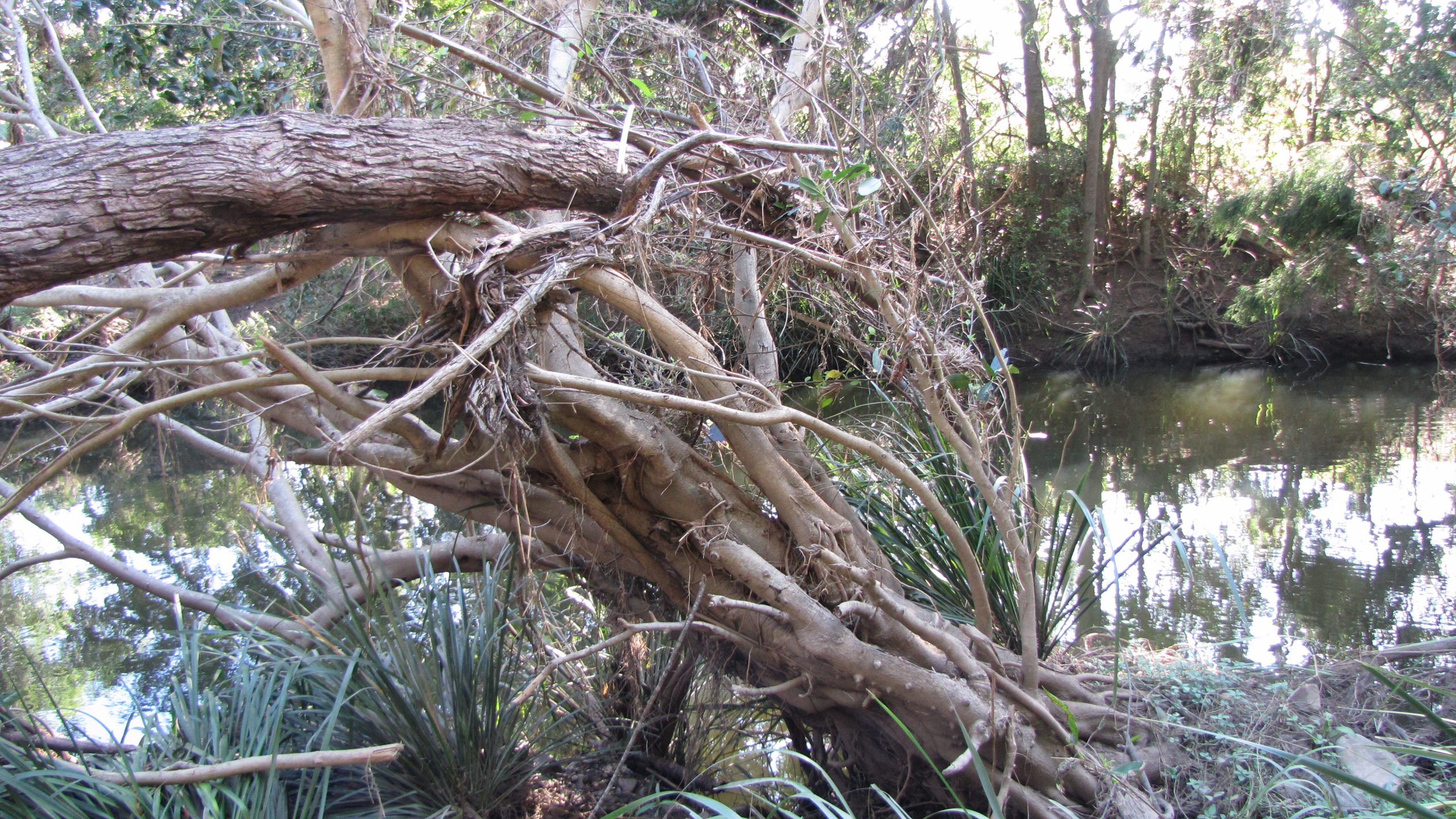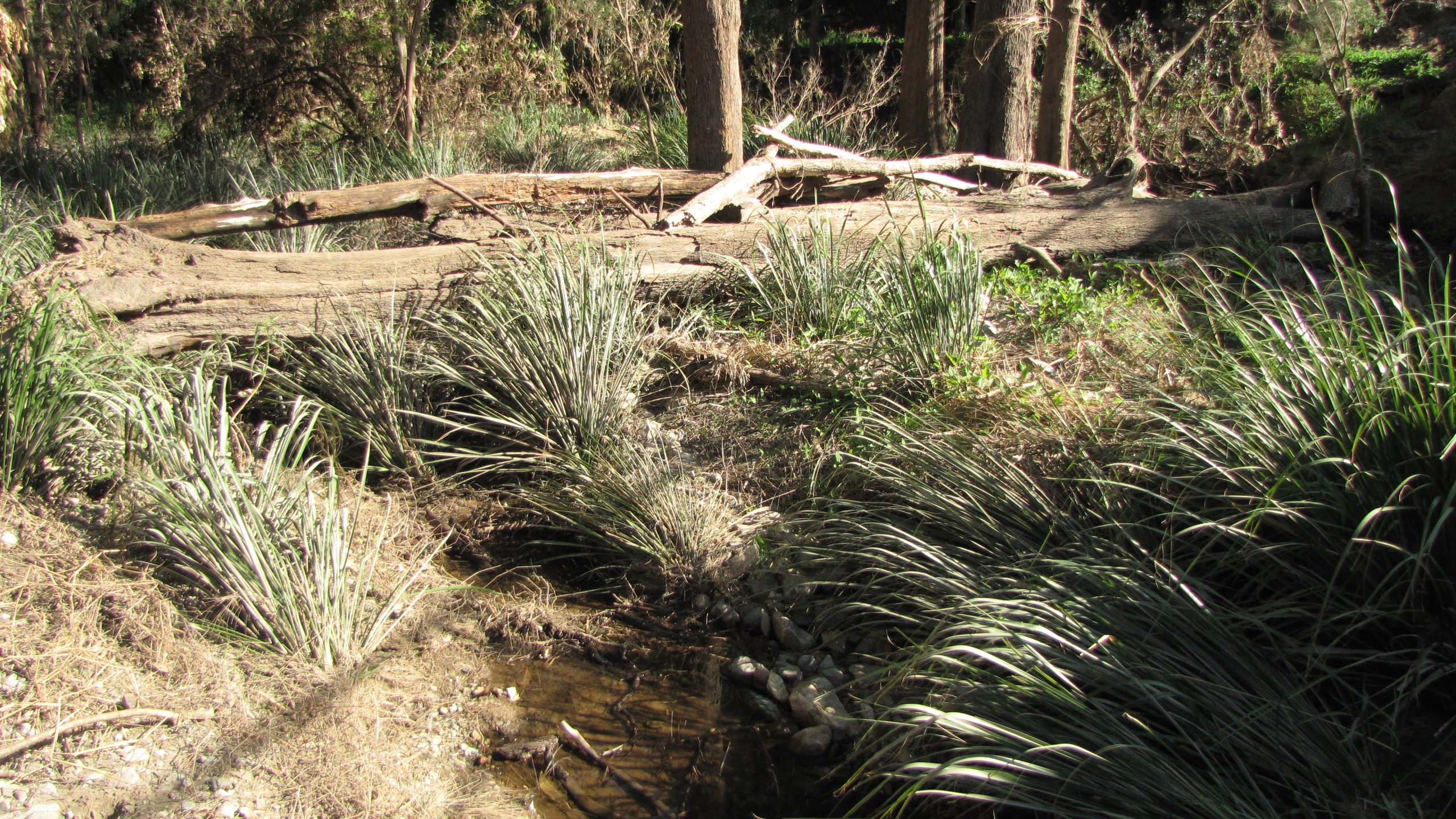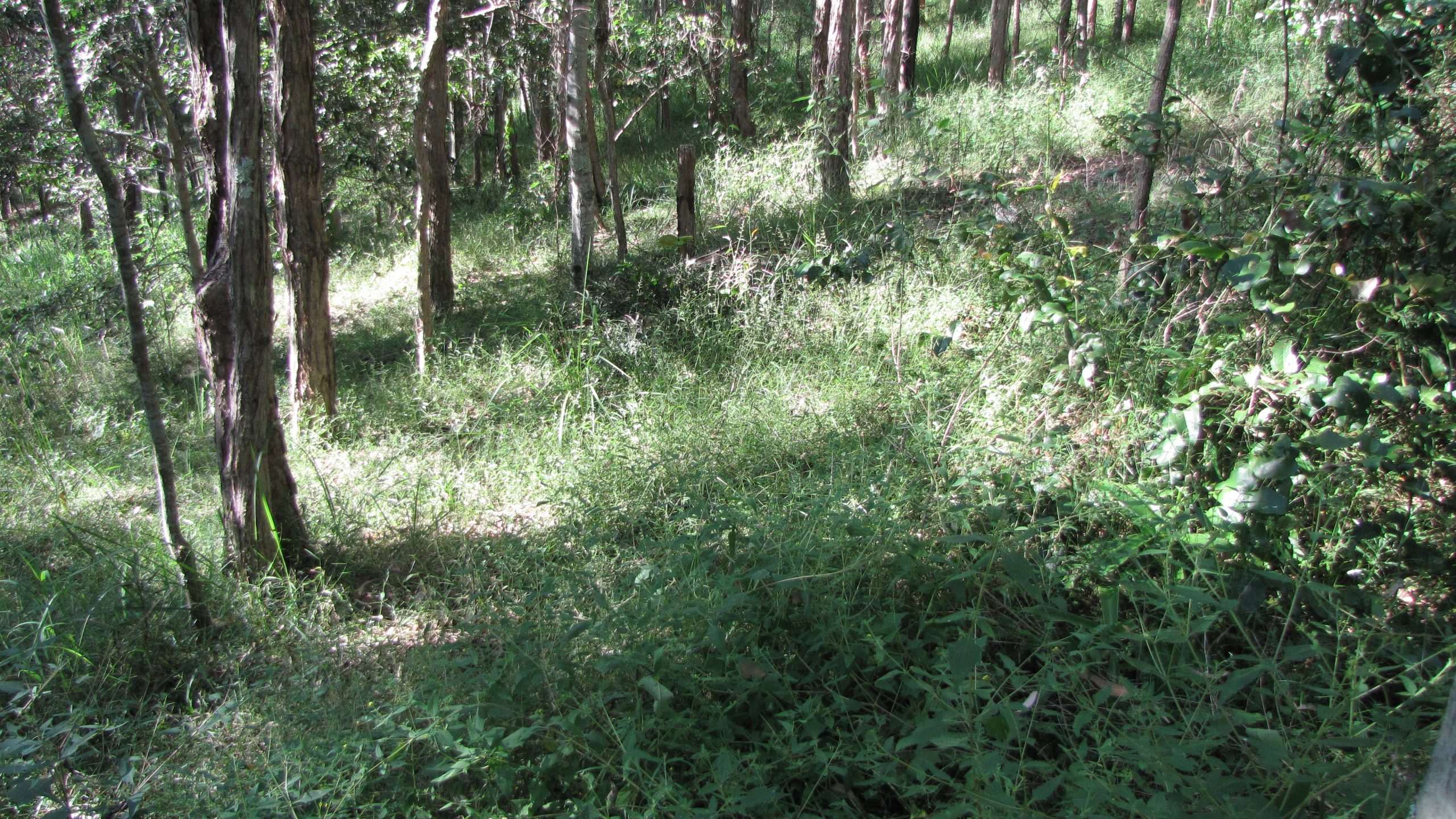Recent Flooding
We all remember well the recent rainfall event. Over the four days 25th – 28th February in Kenmore Hills we recorded 795 mm. Sadly, many residences close to Brisbane’s creeks were seriously flooded. But vegetated areas along creeks were also impacted, effects varying depending on the nature of the vegetation and age. Recent plantings were in many cases flattened and even moderate sized trees were bowled over. Logs and branches carried downstream caused considerable damage to existing trees, as the photo shows, in which a large log has impacted a mature fig tree on the bank of Moggill Creek. Owing to potential danger associated with the flooding, permission for bushcarers to rescue damaged trees on Council land was delayed. Different species differ in relation to recovery, with the creek sandpaper fig being especially good at recovering from being bowled over, hanging on by a few roots and sprouting from along its trunk, whilst the river she-oaks are just bowled over and may not recover.
 Fig tree impacted by floating log
Fig tree impacted by floating log
The other adverse effect of creek flooding is debris and plant material being washed downstream. Many of the understorey weed species take root again after having been moved and the climber Madeira vine will spread by its tubers being washed downstream too. Where creek margins had been cleared of all vegetation, significant erosion would have occurred and where weed species are the only ones present on flood-prone land, it is desirable to remove them progressively, replacing with natives, to avoid significant erosion. Lomandra species especially are superb at holding the soil in place and emerge unaffected following days underwater, as shown here.
 Lomandras flourish and control erosion
Lomandras flourish and control erosion
Away from flooded areas the rain has largely been welcome, although some landslips have occurred. Plants – both native and exotic – have benefitted from the improved moisture. Where exotics such as signal grass have been removed native grasses have flourished and produced seed following the rain. Varying depending on species, tree species will have benefitted too, through moisture penetrating to the subsoil.
 Woodland with native grass understorey benefits from increased moisture
Woodland with native grass understorey benefits from increased moisture
Words and Photos by Bryan Hacker
Published in


